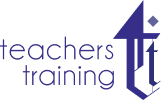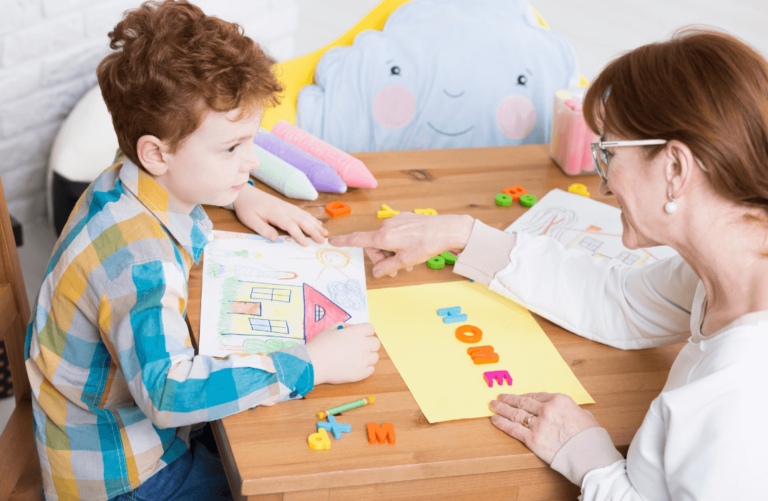Table of Contents
Introduction
It might be difficult for so many kids to pick up new social or behavioural skills. This is particularly true for kids who have developmental or autism-related issues. Even the simplest activities like sharing toys, holding a spoon, or asking for help can be difficult for them.
Want to help them? Enters Applied Behaviour Analysis (ABA)! It is a kind of therapy that focuses on understanding behaviours. It turns challenges into success, through positive reinforcement. Read on to learn all about Applied Behaviour Analysis therapy.
What is Applied Behavior Analysis
Applied Behavior Analysis focuses on understanding and improving behaviour, especially in children. It’s all about helping kids learn positive behaviours and reduce negative ones through reinforcement.
Basically, you will reward good behaviour to encourage it while not giving attention to negative behaviour, so it happens less often. It’s commonly used with children who are autistic or have developmental disabilities.
If your child was diagnosed with something like autism, you might have heard of ABA therapy from your paediatrician. They usually recommend it to children with developmental disabilities to help them build social and emotional skills. ABA therapy uses proven techniques from learning theory.
It’s an effective one-on-one type of therapy where the practitioner and child work together to improve communication, social interaction, and emotional understanding. To better understand the nitty-gritty of ABA therapy, you may enrol in an online Applied Behavior Analysis course.
How Does Applied Behavior Analysis Therapy Work

The Applied Behavior Analysis uses a set of techniques and procedures.
- Goal Setting: At the start of therapy, make sure to establish specific goals based on each child’s needs. As they progress, adjust these goals to continue developing their skills.
- Positive Reinforcement: When your child completes an activity or behaves in a desirable way, reward them. This motivates children to carry out the behaviour again, gradually reinforcing constructive behaviours.
- Behaviour and Consequence: APA therapy tells children that good behaviours are rewarded. But it also shows them – through consequences, that negative behaviours are discouraged. For instance, a youngster receives praise or another positive consequence if they follow instructions. You can choose to ignore their actions until they comply if they don’t.
You can enrol in an online ABA course to learn more about the techniques and strategies that might help you develop a career in Applied Behaviour Analysis.
How is Applied Behavior Analysis Helpful?

Applied Behavior Analysis (ABA) is a science-driven approach. As the name suggests, “Applied” Behaviour Analysis therapy works with important skills – that are applied in everyday life. Children with developmental disabilities often find it difficult to do everyday chores. Simple tasks like holding a spoon can be very daunting for them. While ABA therapy starts with very simple tasks, it soon dives deep into critical tasks.
Whether it’s learning to speak, play, or manage daily tasks, ABA techniques can help. The scope of ABA therapy is vast. Here’s how Applied Behavior Analysis can help:
- Promoting concentration: ABA encourages children to stick with tasks. This can be done by breaking down activities into small, manageable steps.
- Identifying and adjusting environmental factors: ABA techniques help pinpoint elements in a child’s environment that may influence their behaviour. By making changes to these factors, you can improve their behaviour.
- Building practical life skills: ABA therapy helps children develop essential skills, such as crossing the road, asking for what they need, or packing their school bags independently.
- Customising interventions: ABA is especially useful for structured, rule-based learning. However, it may not help teach creative or less structured tasks, such as imaginative play or casual conversations.
- Teaching new concepts: It supports learning basic concepts such as colours, shapes, or letters through structured interventions.
- Reducing problematic behaviours: ABA focuses on positive alternatives to decrease harmful or disruptive behaviours, like self-injury or property damage.
Who Can We Help with Applied Behavior Analysis?
Parents and professionals can help their children with autism or developmental disabilities through ABA techniques. You can join online ABA communities to get a clearer picture of just how many people are in need of this service.
What Makes a Safe Applied Behavior Analysis Therapy?
Applied Behavior Analysis is safe if it has the following traits:
- Helpful and meaningful: Focus on developing skills that are useful to your child and family, with your child involved in setting their own goals.
- Individualised: Therapy goals should be tailored to your child’s unique skills, needs, interests, and family situation.
- Strengths-focused: Build on your child’s strengths, aiming to improve existing skills or teach new ones, rather than just reducing challenging behavior.
- Safe and monitored: Safety of your children—both physical and emotional—should be your top priority. Make sure that your children are receiving ABA therapy in a safe and monitored environment.
- Balanced: Therapy should be balanced. It should be equal parts relaxation and play. Make sure that your child has time to simply be a child.
What is Unsafe ABA Therapy?
You will need to be very careful while providing ABA therapy to your child. Pay very close attention to how your child is responding to the therapy. You should immediately withdraw your child from therapy if you deem it unsafe. It can do more harm than good if the ABA therapy is even slightly unsafe for your child.
The ABA therapy will be unsafe and counterintuitive for a child if it has the following:
- Punishment: If physical or emotional punishment is used to change behaviour, it will not help your child. Rather, it’s harmful and doesn’t help a child’s development.
- Negative focus: If the therapy is all about stopping behaviours without teaching new skills, especially if the behaviour isn’t harmful (like arm flapping when excited), it can be unhelpful.
- Generic approach: Therapy that’s not customised for your child and just follows a standard program for everyone is a red flag.
- Forcing neurotypical behaviour: If the goal is to make your child act less autistic or more “typical,” it can harm their self-identity instead of celebrating their uniqueness.
ABC is a great technique for Applied Behavior Analysis. Let’s take a look at how this ABA technique works.
It’s all about understanding what happens before and after a behaviour. By looking at these three steps, we can figure out why certain behaviours happen and how to encourage more positive actions. A-B-C technique basically stands for:
- A is for Antecedent: This is what happens right before the behaviour. It could be a request from someone, like a teacher asking, “Time to clean up!” Otherwise, it could be something in the environment, like a loud noise or a toy in front of the child.
- B is for Behavior: This is the response to the antecedent. It could be anything from following directions to throwing a tantrum. How the child reacts is very important. Pay attention.
- C is for Consequence: Consequence should follow each behaviour. If the child’s behaviour is positive, give them a positive consequence. Maybe a praise or a reward. If it’s a negative behaviour, you may choose to not react at all or provide a not-so-rewarding response.
Why the ABCs Matter
The ABCs help us figure out why a particular behaviour is happening. Once we know that, we can modify the antecedent or consequence to guide the person toward more positive behaviours. For example, ABC could be:
- Antecedent: The teacher says, “Time to clean up.”
- Behaviour: The child is reminded to ask, “May I please have 5 more minutes?”
- Consequence: The teacher says, “Sure, you can have 5 more minutes!”
With practice, the child learns to communicate their needs more appropriately, making everyone’s life a little easier.
Final Words
Applied Behavior Analysis is much more than just therapy. It helps children take meaningful steps forward. Its contribution ranges from mastering daily tasks to improving communication, and social skills.
It’s a game-changer for kids with developmental disabilities. With the right support and a bit of patience, you’ll be amazed at the progress they can make. If you’re thinking about ABA for your child, trust your instincts, stay involved, and make sure the approach feels right for your family.
Here’s to helping our kids shine bright and thrive in their unique ways!





